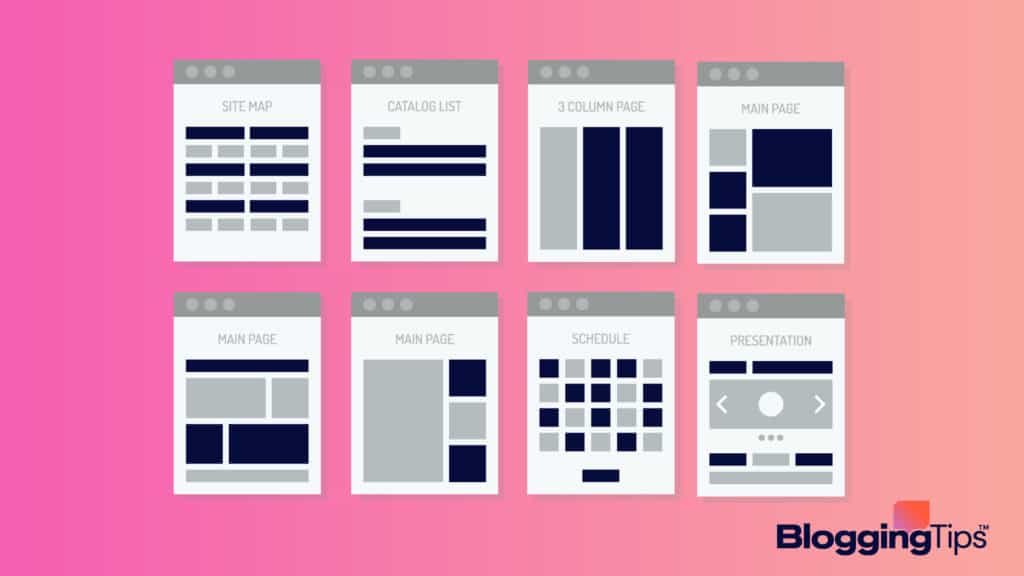Most successful blogs aren’t created just for the money – their owners want a creative outlet that lets them make cool things and help other people.
That said, it’s a lot easier to learn how to start a blog and give it to the time and attention it needs when it does make money.
For new bloggers, it can be hard to visualize what a profitable blog looks like, so I’ve listed some common types of blogs that make money, how they do it and the pros and cons of that blog type.
If you’re looking for the best blog niches to make money, I’ve listed those further down.
- Type of Blogs That Make Money (Examples)
- 1. Blogs that display ads.
- 2. Blogs that use affiliate marketing.
- 3. Blogs that sell eBooks.
- 4. Blogs that sell courses.
- 5. Blogs that sell digital products.
- 6. Blogs that sell physical products.
- 7. Blogs that offer memberships.
- 8. Blogs that offer services.
- 9. Blogs that offer consulting.
- 10. Blogs that publish sponsored content.
- Types of Blog Niches that Make Money
Type of Blogs That Make Money (Examples)
We’ve included an overview of our top picks below. For detailed information on each pick, scroll down.
- ITEM
- ITEM
- ITEM
- ITEM
- ITEM
- ITEM
- ITEM
- ITEM
- ITEM
- ITEM
1. Blogs that display ads.
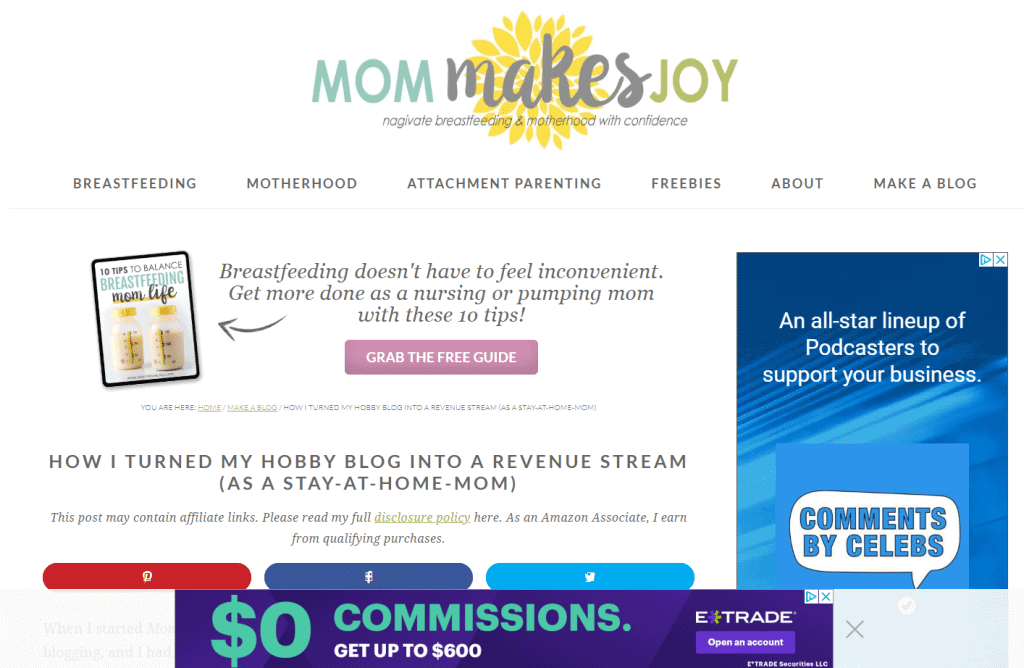
Ads have been around as long as blogs have, and they’re still a great way to get started monetizing your blog.
Some networks have traffic minimums you’ll need to reach before you can join, and others, like AdSense, have no or low standards that can also mean low earnings per visitor.
That said, ads can be a good way to bring in a baseline income to cover your blogging expenses, and with enough traffic, it’s more than possible to make a few thousand dollars each month off ads.
- Difficulty: low
- Pros: easy to set up, low maintenance
- Cons: low earnings compared to promoting your own products, need high volume of traffic to earn significant income, overall earning potential limited
- Example: Mom Makes Joy, who earned $1,129.59 from Mediavine in December 2019
Learn more: Google AdSense, Mediavine, The Top 4 Blog Advertising Networks
2. Blogs that use affiliate marketing.
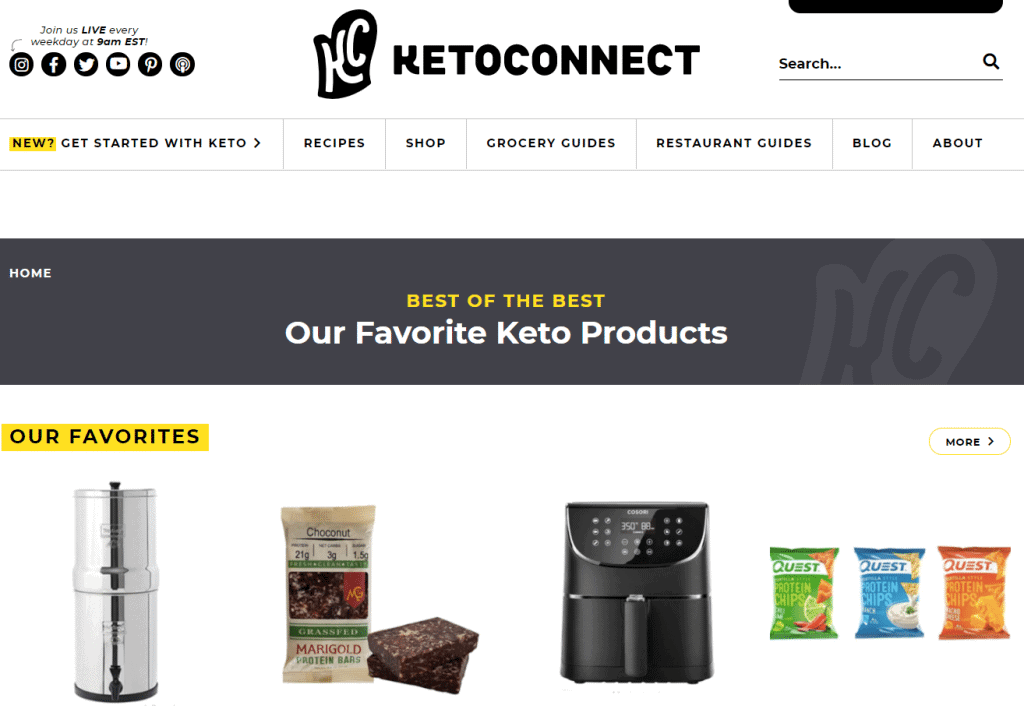
Affiliate marketing is a pretty standard operating procedure for blogs at this point, so instead of explaining how it works, let’s just say that affiliate marketing can generally make a lot more money than display ads, so it’s a smart option when you’re ready to jump in.
The key to affiliate marketing is partnering with affiliate programs that are aligned with your readers and the goals of your site, and to offer value to your audience.
Put their wants and needs before your potential affiliate earnings.
You don’t want to pitch everything under the sun – stick to what your audience wants and offer affiliate products and services that make sense.
Also, don’t forget to put an affiliate link disclosure on your site.
We’ve listed a few great affiliate disclosure examples, but do your own however it resonates best with your audience.
- Difficulty: low/medium
- Pros: easy to earn more money than with ads, higher earning potential
- Cons: more competition in “affiliate” niches like product reviews, earnings still limited compared to promoting own products, can be difficult to find the right affiliate programs for your audience, can be difficult to add your own value
- Example: KetoConnect does a great job of offering value with blog posts like their keto bread recipe, which includes affiliate links to products like almond flour and Stevia (they also have a shop with affiliate links)
Learn more: The Highest-Paying Affiliate Programs
3. Blogs that sell eBooks.

The first two types of blogs use other people’s products to earn money, but here we start to get into creating your own products.
An eBook is a great first product to create because you’re already in the business of creating content – often, selling an eBook is simply a matter of repackaging and branding your content.
And if you think people won’t pay for your information, think again.
Bloggers often give away more information for free than they need to, and you’d be surprised to know how many people will gladly pay a few bucks for valuable info, especially if it impacts their health, finances, relationships and so on.
- Difficulty: medium
- Pros: higher earning potential than ads or affiliate marketing, ability to create exactly what you want to promote on your blog
- Cons: takes much more effort to create an eBook than put up ads or affiliate links, may require more of a sales funnel on your site
- Example: Travel blogging is a great way to see the world while making money at the same time.
The travel bloggers at Adventure in You have a great guide book section with all types of eBooks, so does Nomadic Matt.
Learn more: How to Write, Publish and Sell an eBook
4. Blogs that sell courses.

Here’s where we really start to level up: selling online courses!
Online courses are all the rage these days, but there’s good evidence to suggest they’re not going away anytime soon.
People love to learn stuff, and if you can teach your audience something useful, a course is a great way to monetize your blog.
- Difficulty: high
- Pros: extremely high earning potential
- Cons: can take significant amount of time, money and/or resources to complete
- Example: Succulents and Sunshine offers tons of free content, but also sells a premium course for those who want even more help growing “Pinterest-perfect” succulents
Learn more: The Best Online Blogging Courses: Learn Blogging like a Pro
5. Blogs that sell digital products.
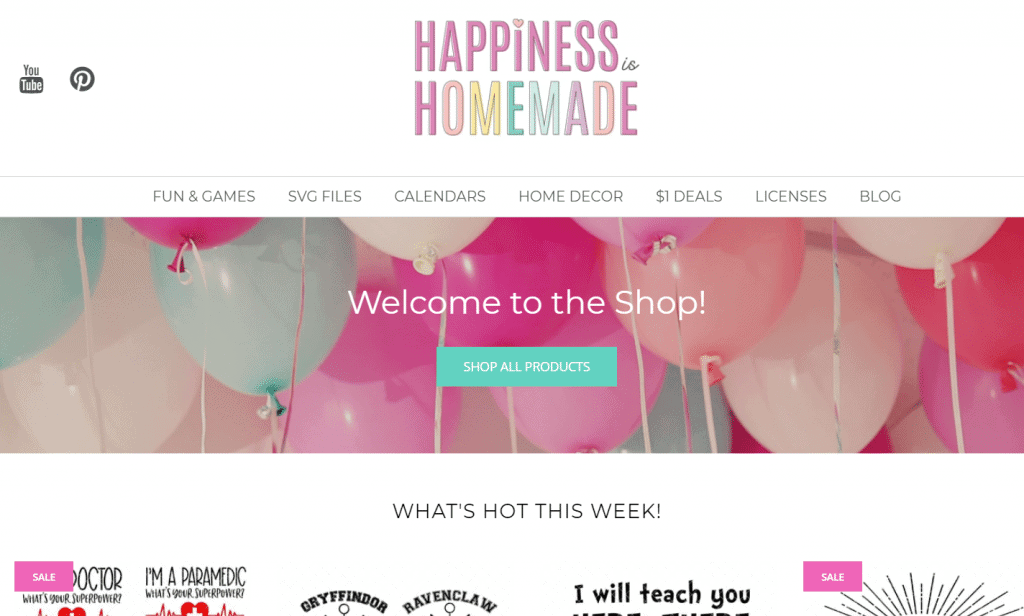
Like ebooks, digital products are relatively easy to create and sell, especially if they meet the needs of your audience.
Digital products might include printables, checklists, graphics, music, video or documents.
- Difficulty: medium
- Pros: higher earning potential than ads and affiliate marketing, easier to distribute than physical products
- Cons: take be time-consuming to create digital products
- Example: Heidi at Happiness is Homemade offers a shop along with her blog that has printables like graphics, calendars, games and more
Learn more: How Products Increase Value When You Build a Blog to Sell
6. Blogs that sell physical products.

When done right, e-commerce is a great way to monetize your blog, though it doesn’t work for every niche or blogger, so testing here is key (ie don’t place a wholesale order from overseas if you don’t know how the stuff will sell).
If your blog’s on WordPress, you can use a platform like Woocommerce to create a store, or use Shopify on a subdomain (shop.yoursite.com).
- Difficulty: high
- Pros: good earning potential and scalability
- Cons: can be time-consuming to build a shop, ship products and offer customer service
- Example:
Learn more: Uncrate gets millions of visitors each month, and some of them go to the blog’s shop at Uncrate Supply, where they offer products aligned with their core audience
7. Blogs that offer memberships.

Like online courses, online memberships are popular these days, and for good reason.
Some folks aren’t up for paying hundreds of dollars for a one-time course, but they are game for a low-fee monthly membership that offers access to resources, community, etc.
The key here is determining what your membership looks like: what do members get each month, how do you provide that value and how do you retain members for the long haul?
- Difficulty: high
- Pros: significant earnings potential, lots of flexibility in what you offer
- Cons: can be time-consuming to maintain membership, create monthly deliverables and sell membership while retaining current members
- Example: Food Blogger Pro is a monthly membership for bloggers looking to improve their food blogging skills
Learn more: See how Schoolofpodcasting.com makes money on memberships
8. Blogs that offer services.
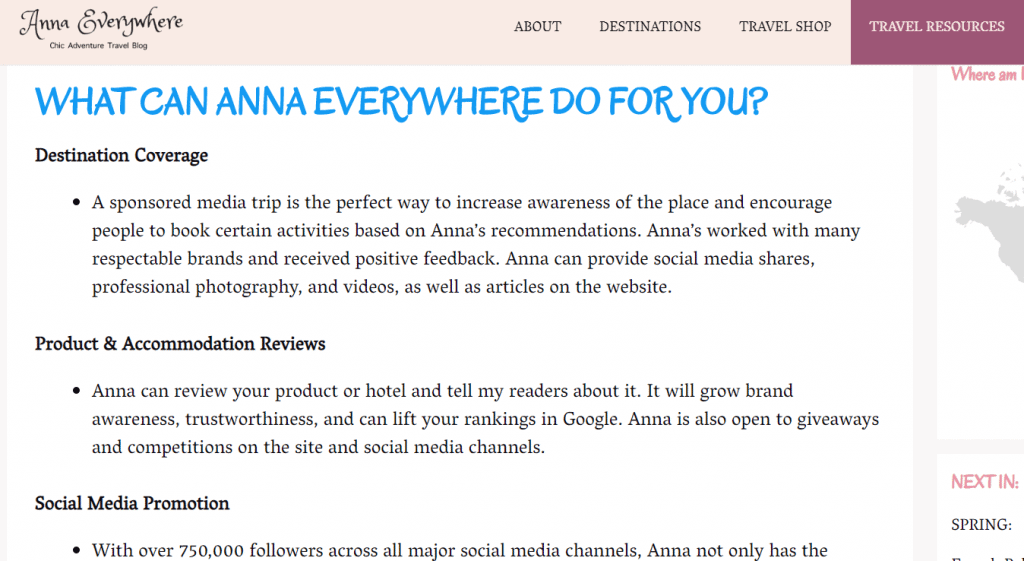
If products aren’t your thing, it’s more than possible to offer services on your blog.
If your blog’s about Pinterest, for example, you can offer Pinterest management or other social media services.
The key, as always, is to ensure you’re offering services that your audience is actually interested in, otherwise your traffic won’t convert to customers.
- Difficulty: medium/high depending on service
- Pros: may be easy to offer service based on your experience, expertise and skill set
- Cons: may not be easy to scale earnings if your time is limited
- Example: Anna Everywhere is a successful travel blog, and Anna also offers writing and promotional services based on her content and audience
Learn more: 6 Tips to Consider When Building a Service-Based Blog Business
9. Blogs that offer consulting.
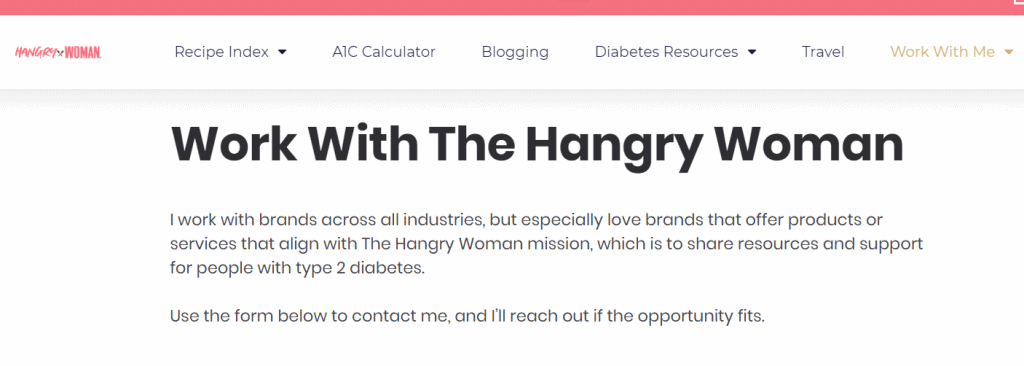
Consulting is another great way to monetize your site and potentially less time-consuming than services.
For example, if I take on an SEO client, I may spend all my time updating their on-site elements like title tags, descriptions and so on.
But if I work with them as an SEO consultant, I can provide them with a project plan and they can implement the game plan themselves.
So consulting in this way can be slightly easier to scale.
A great way to find consulting opportunities is to look through the income reports of competitors.
If they’re doing consulting work in their industry, you can look through these reports and oftentimes find out how much they’re making by doing so.
- Difficulty: medium/high depending on market
- Pros: easy to provide consulting based on your skills and expertise
- Cons: may not be easy to scale or find consistent clients, depending on niche
- Example: Mila at Hangry Woman offers consulting for brands and products that work with people suffering from type 2 diabetes
10. Blogs that publish sponsored content.

This should’ve been earlier on the list but I forgot about it until now so here we are let’s go with it.
Sponsored content is in the realm of ads and affiliate marketing, and there are all types of ways to make it happen.
Reach out to brands, offer value and remember to focus on what they get out of it.
- Difficulty: low/medium
- Pros: able to work with brands with sizable marketing budgets, good earnings
- Cons: can be difficult to consistently land sponsored content partnerships with brands
- Example: scroll through Gear Patrol and you’ll see plenty of sponsored content stories, but the great thing is they don’t stand out as annoying ads – they blend into the organic content for a seamless experience
Types of Blog Niches that Make Money

If when you say “types of blogs that make money” you actually mean the types of blog niches that make money, ignore the section above: I got you.
I’ve gone over some of the best niches in the past, and the basic idea is to not go too broad (don’t be Walmart), and to not go too specific (don’t be the weird dirty exotic pet store that never has any visitors.).
You want to be in a niche that has traffic, advertisers, brands, searches, problems, the whole nine yards.
But you want to do it with a specific angle.
If you’re a food blogger, try to find a subniche like keto recipes or family-friendly foods.
If you’re a personal finance blogger, try to focus on something like savings or debt and avoid covering every financial topic under the sun.
For bloggers, the best niches are those with lots of questions and problems because those turn into Google searches.
And the more Google searches a niche has, the more opportunities for content. Woohoo.
Here’s a look at some of the most popular blog niches that make it easier to make money, and a few examples of each.
1. Personal finance
2. Food
3. Lifestyle
4. Parenting
5. DIY and crafts
6. Home improvement
7. Health and fitness
8. Business and blogging
9. Travel and outdoors
10. Hobbies
11. Learning and education
What type of blog will you grow?
Now that you’ve seen 10 types of blogs that make money and 11 blog niches that are ripe for monetizing, the question is: what type of blog will you start and grow?
There’s no right or wrong answer, and often it takes a ton of trial error to figure out exactly what works for you, your interests and your audience.
But the best way to figure it out is to keep trying ’til something clicks.
